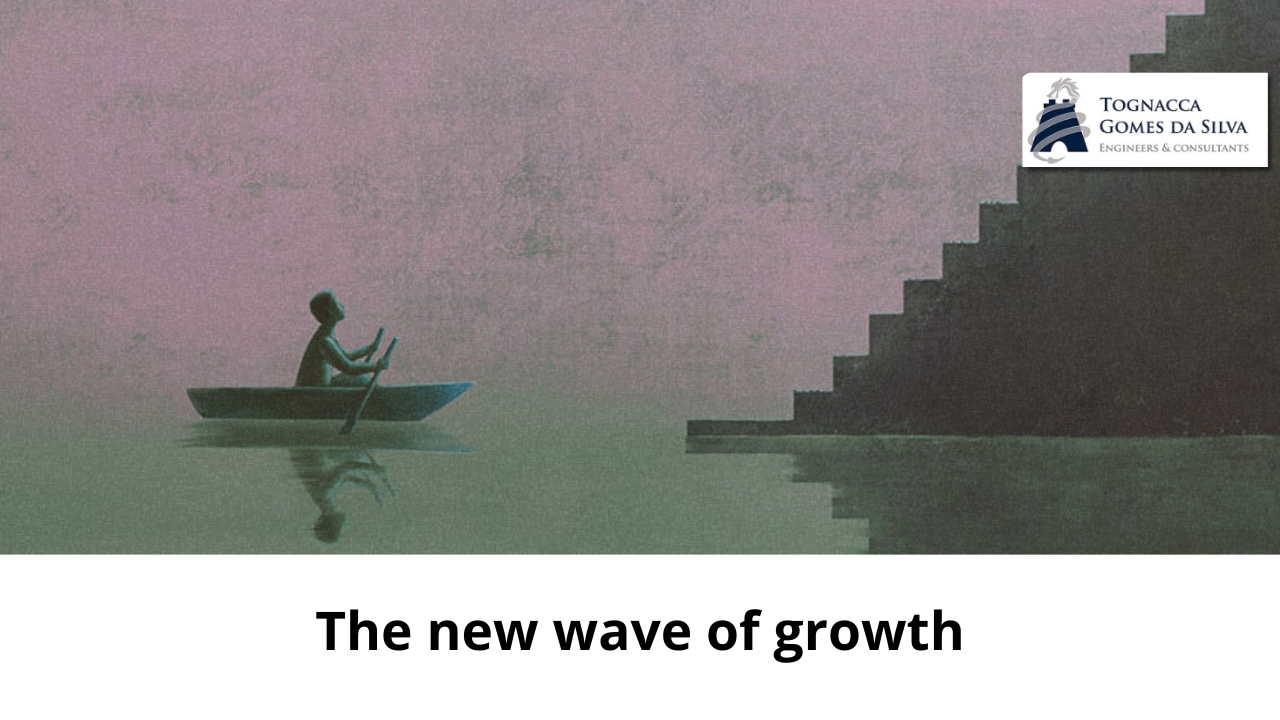Two out of three organizations already need to redefine their strategy this decade. Ten years from now, this scenario will affect three out of four organizations, says Chris Zook, former head of global strategy at Bain & Company. Author of the book “Unstoppable”, Zook is clear: the speed of change and new trends limit the growth formula faster and companies increasingly need to change their core business more frequently to survive.
Opportunity to change, however, is not lacking. We have reached a maturity of certain base technologies in the last two decades and what we are experiencing now is a unique – and powerful – combination of several of them. We are experiencing a historic wave of growth.
Considering the full economic impact of the convergence of certain technologies, real GDP growth could accelerate to 7% per year on average, according to a report this year from ARK Investment Management LLA. This result surpasses any result of innovations since 1950.
Confluence of technologies
The basis of everything started with the internet, mobile, the cloud, Big Data. Innovation appeared with 3D, renewable energy, IoT, nanotechnology, robotics, blockchain. From the combination of all this, we built the smart grid, connected car, smart homes and cities, narrow AI. We pave the way for digital education to reach and spread, for health systems to digitize, for the sharing economy to be tested, for the expansion of 5G, autonomous vehicles and automation on several fronts. Layers and layers of innovations so that we now have the chance of the extreme combination, the symbiosis of all of this.
An interesting example is what we can obtain by converging advances in three specific areas: Generative Artificial Intelligence (Gen AI) + spatial computing + blockchain/web 3.0 and completely redefining our interaction between the physical and digital worlds. An article published in the World Economic Forum (WEF) indicates that the convergence of these three technologies can range from enhancing retail experiences to improving security processes at airports. In the near future, this convergence will transform deep social structures: in the administration of a smart city, for example, blockchain would be the backbone for safe, transparent civic engagement; generative AI would optimize services based on real-time data and spatial computing would provide the immersive and intuitive interfaces for citizens interacting in the urban environment.
“There will even be a near future where our interactions with technology are not limited to specific hardware. The future is about diversity in technological interaction, transitioning seamlessly between devices and platforms, enabling more natural and intuitive engagement between our physical and digital worlds, and enhancing our capabilities without being tied to a single type of device”, say the authors of the article at WEF.
More mature technologies that are widely adopted serve as facilitators for the emergence of others. Among the 15 recently mapped by McKinsey, the most adopted currently (in full adoption, implementation or pilot phase) are cloud/edge computing; advanced connectivity; Generative AI, applied AI and the next generation of software. Soon after, cybersecurity, electrification and renewables, machine learning in industries and mobility appear.
AI redesigns the Internet
While convergence takes place in several areas, the digital front most visible to all of us (Internet) is redesigned. In real time. For everyone to see. If yesterday we had the so-called ‘internet of action’, where we accessed the search engine/Google to look for what we wanted, today AI presents us with the ‘internet of automation’.
The Internet is possible with the evolution – and confluence – of large language models (LLM), neural networks, synthetic data, autonomous agents. It is the Internet that will be structured and operated by ‘AI agents’, who will look for what I need, at the right time, without needing an explicit order or indication. Everything regulated by smart contracts (hi, blockchain) and remunerated via tokenization (hi, money 2.0). More than 50 startups have emerged since 2022 with an exclusive focus on creating AI agents.
In a text published on September 23, Sam Altman, founder of OpenAI (owner of ChatGPT), said that AI models will soon serve as autonomous personal assistants that perform specific tasks on our behalf, such as coordinating medical care. “At some point down the line, AI systems will get so good that they will help us make better next-generation systems and make scientific progress across the board,” he said.
The anxiety of change
In this new Internet and confluence of technologies, it is difficult to know where to focus. Because there are still significant limitations on the adoption of many of these combinations by companies, there are ethical, privacy, secrecy and transparency dilemmas. There are also cultural and social barriers.
But we must bear in mind that there are few moments in life – and in our history – with such a capacity for giant growth than the current one. If we wait for the opportunity to open up, everyone will already be in. Steve Jobs once said that these waves of technology are visible long before they happen. “You just need to choose wisely which ones you surf. If you choose unwisely, then you may waste a lot of energy.”
Israeli historian Yuval Harari ends his new book “Nexus – from the Stone Age to AI” by stating that everything that is old today was new once. “The only constant in history is change.”
( fontes: MIT Technology Review)



